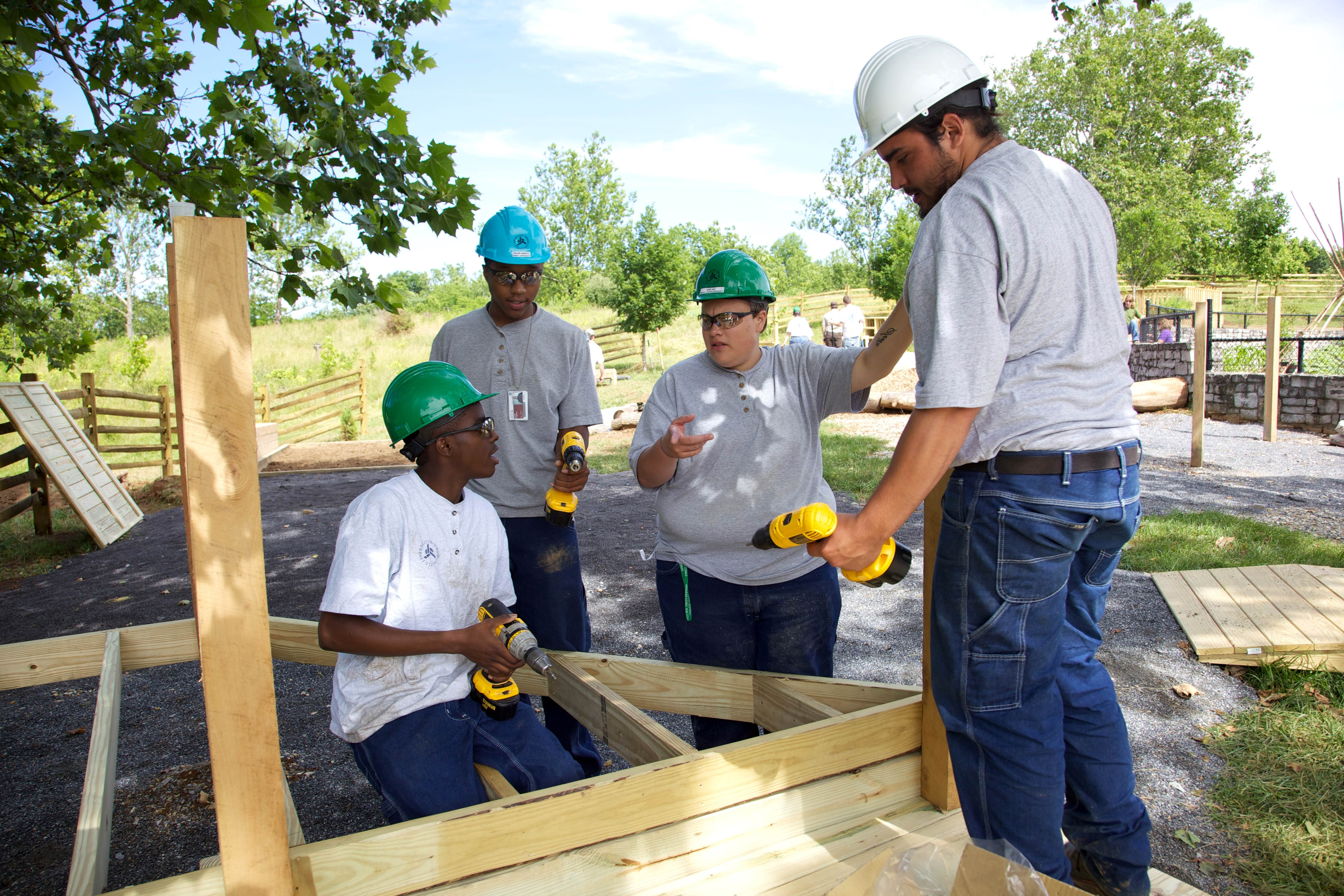Do it together architecture
Contents |
[edit] Introduction
The acronym for do it yourself - DIY - is used to describe the concept of self-repairing, building or resolving an assortment of issues (including those that are not construction related). It is generally understood to mean the task has been addressed without requiring the assistance of professionals.
In direct contrast to this concept, the term do it together - or DIT - has been introduced in conjunction with architecture and communal collaboration, particularly in the area of residential buildings.
[edit] Origins
The term DIT is borrowed from the language of cohousing. Cohousing is a method of living that has become established in several countries around the world. Created and run by residents, cohousing developments are communities where people not only know their neighbours but actively manage their neighbourhood alongside them.
The idea of DIT architecture builds on the cohousing concept to form a collective approach to the design and construction of neighbourhoods.
[edit] The purpose of DIT architecture
In DIT architecture, not only does the construction process become a form of community building (both literally and figuratively), it also becomes part of a training method for those interested in learning new skills and participating in the programme. In addition to encouraging residents, DIT architecture may involve members of non-profit organisations, volunteers and unemployed people from the community.
Also referred to as a type of open-source architecture or crowd sourced architecture, DIT architecture involves people who may be outside the traditional construction professions, but who are invested in the outcome of the project. Ideally, they are motivated to share any applicable skills and infuse the “co-created” outcome with their various social experiences and cultural backgrounds.
[edit] Changing the dynamics
As an emerging ideology, DIT architecture is a by product of the crowd funding era. It breaks established business conventions associated with client-architect relationships and changes the dynamic of who controls the process.
Instead of being driven by decisions dictated by an external consultant, the participants in a DIT architecture arrangement take on key responsibilities, including decision making, materials sourcing and even the building process itself. And while an architect may provide a baseline starting point, it is up to the collaborative community to take the project through to completion - and then live in it and continue adding to it.
DIT architecture is intended to have a less formal, more “human” sensibility, with the purpose of developing a place that projects a sense of togetherness both in its creation and its use.
[edit] Related articles on Designing Buildings Wiki
Featured articles and news
Construction Skills Mission Board launch sector drive
Newly formed government and industry collaboration set strategy for recruiting an additional 100,000 construction workers a year.
New Architects Code comes into effect in September 2025
ARB Architects Code of Conduct and Practice available with ongoing consultation regarding guidance.
Welsh Skills Body (Medr) launches ambitious plan
The new skills body brings together funding and regulation of tertiary education and research for the devolved nation.
Paul Gandy FCIOB announced as next CIOB President
Former Tilbury Douglas CEO takes helm.
UK Infrastructure: A 10 Year Strategy. In brief with reactions
With the National Infrastructure and Service Transformation Authority (NISTA).
Ebenezer Howard: inventor of the garden city. Book review.
The Grenfell Tower fire, eight years on
A time to pause and reflect as Dubai tower block fire reported just before anniversary.
Airtightness Topic Guide BSRIA TG 27/2025
Explaining the basics of airtightness, what it is, why it's important, when it's required and how it's carried out.
Construction contract awards hit lowest point of 2025
Plummeting for second consecutive month, intensifying concerns for housing and infrastructure goals.
Understanding Mental Health in the Built Environment 2025
Examining the state of mental health in construction, shedding light on levels of stress, anxiety and depression.
The benefits of engaging with insulation manufacturers
When considering ground floor constructions.
Lighting Industry endorses Blueprint for Electrification
The Lighting Industry Association fully supports the ECA Blueprint as a timely, urgent call to action.
BSRIA Sentinel Clerk of Works Training Case Study
Strengthening expertise to enhance service delivery with integrated cutting-edge industry knowledge.
Impact report from the Supply Chain Sustainability School
Free sustainability skills, training and support delivered to thousands of UK companies to help cut carbon.
The Building Safety Forum at the Installershow 2025
With speakers confirmed for 24 June as part of Building Safety Week.
The UK’s largest air pollution campaign.
Future Homes Standard, now includes solar, but what else?
Will the new standard, due to in the Autumn, go far enough in terms of performance ?
BSRIA Briefing: Cleaner Air, Better tomorrow
A look back at issues relating to inside and outside air quality, discussed during the BSRIA briefing in 2023.
Restoring Abbotsford's hothouse
Bringing the writer Walter Scott's garden to life.
Reflections on the spending review with CIAT.


























